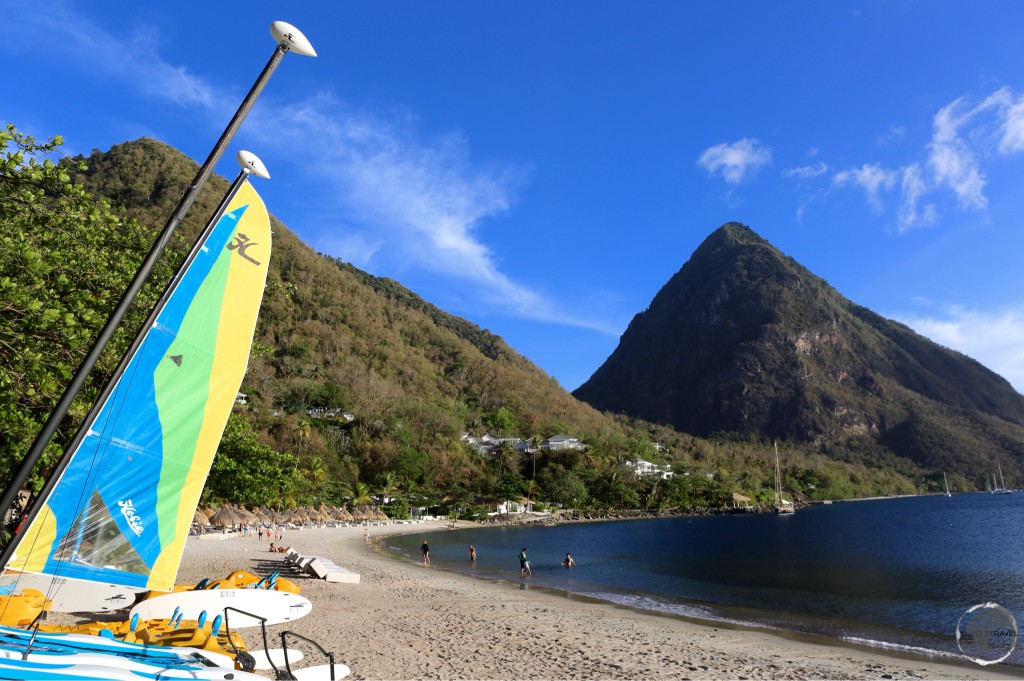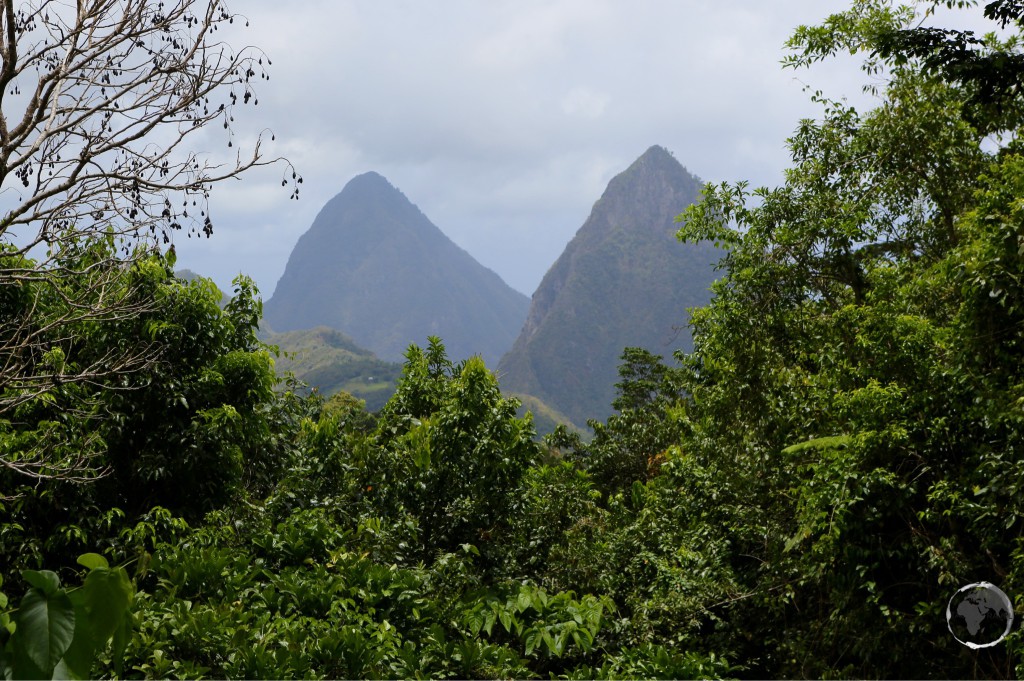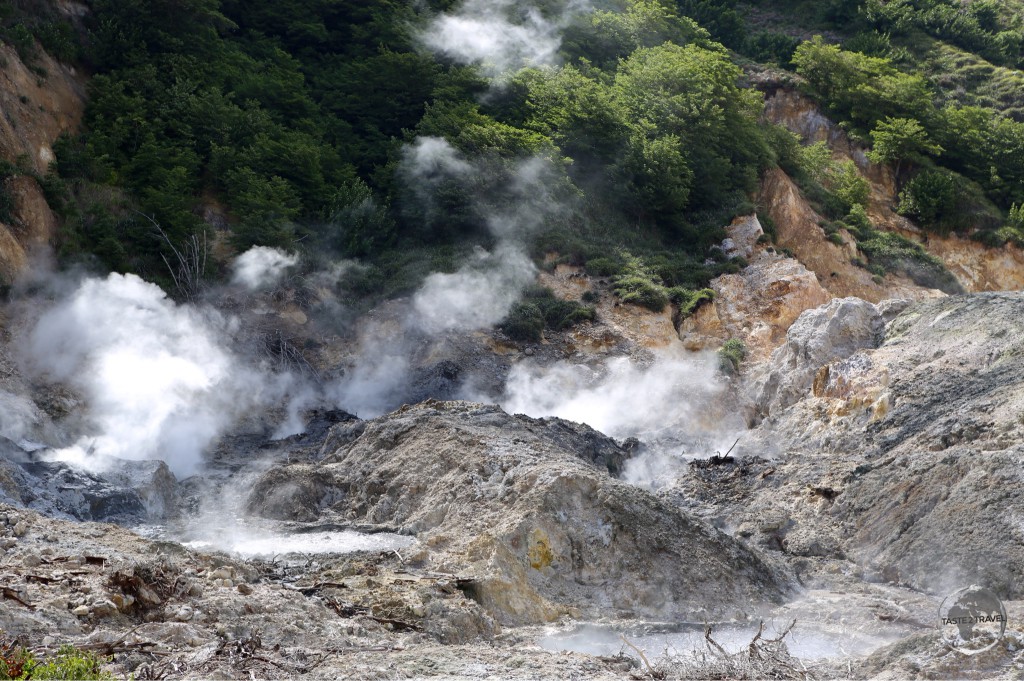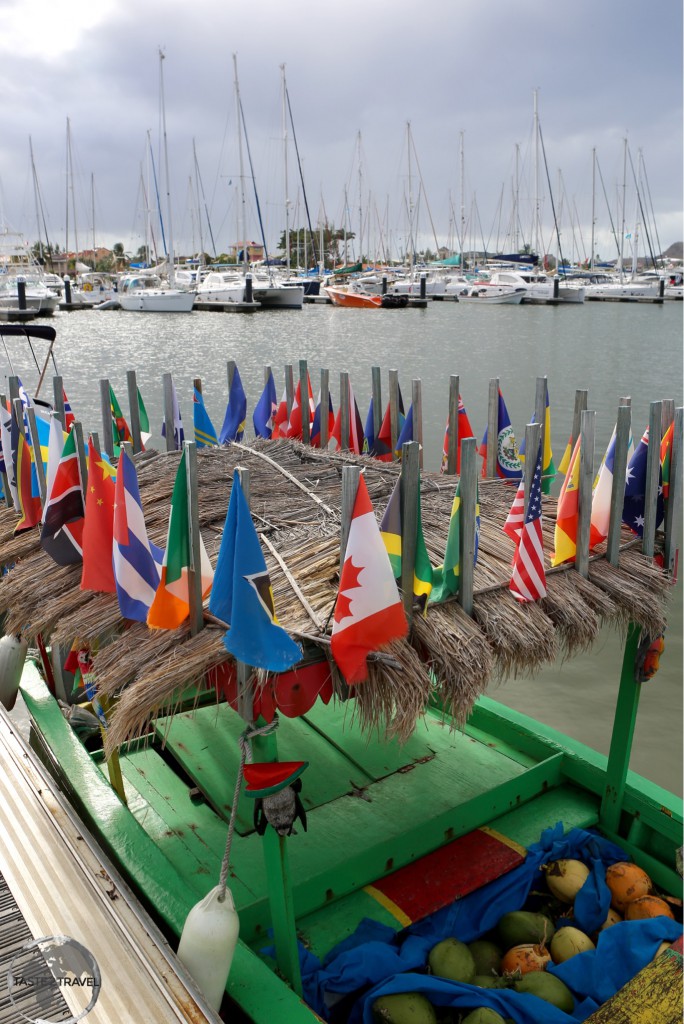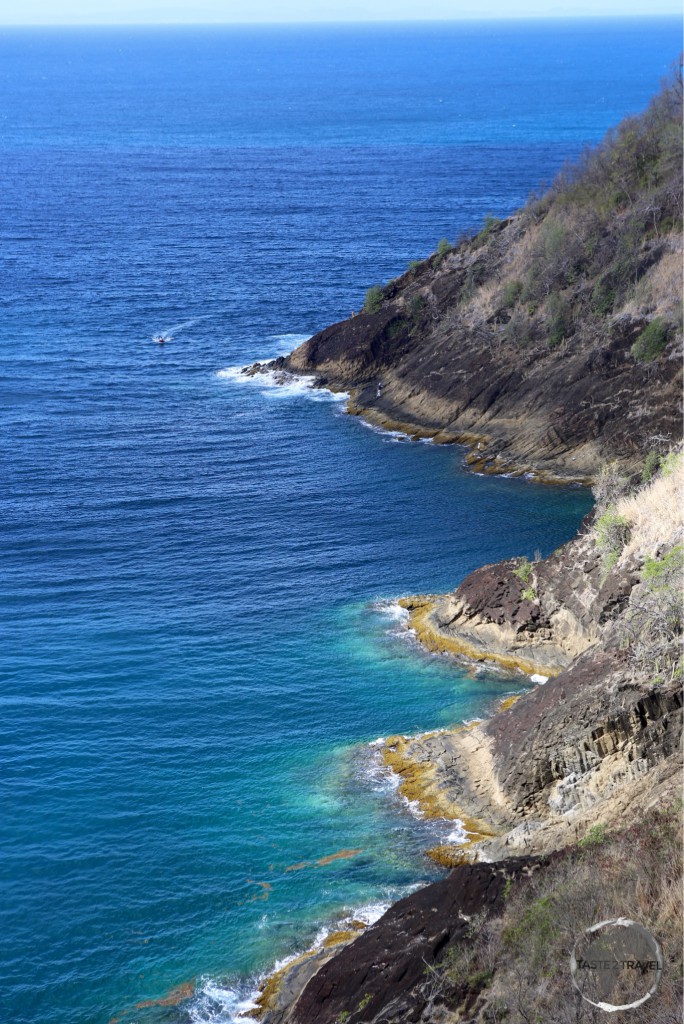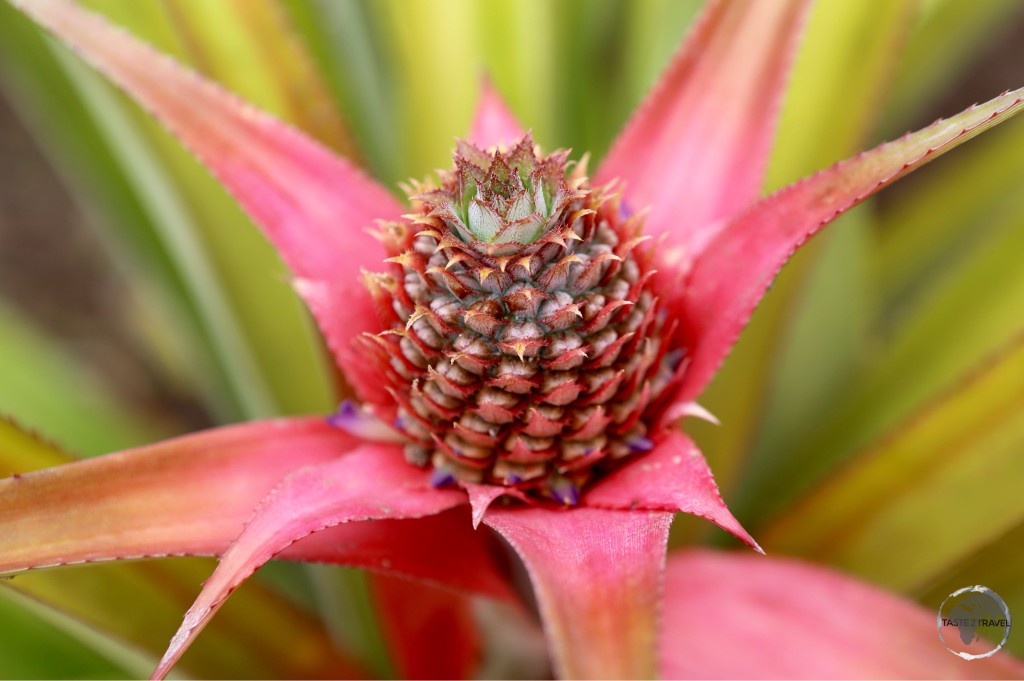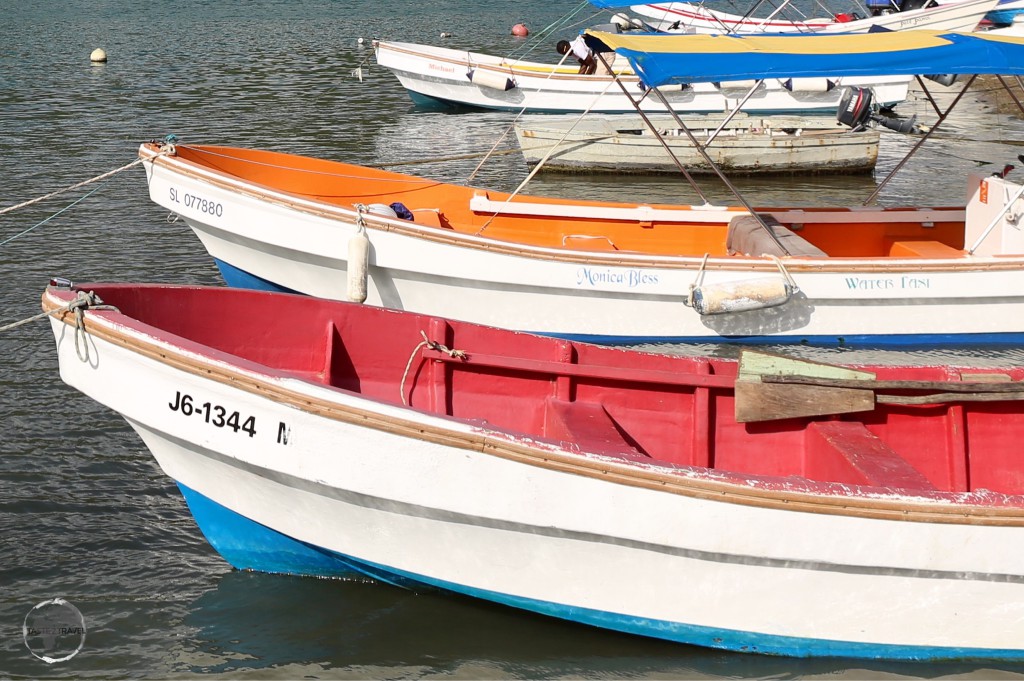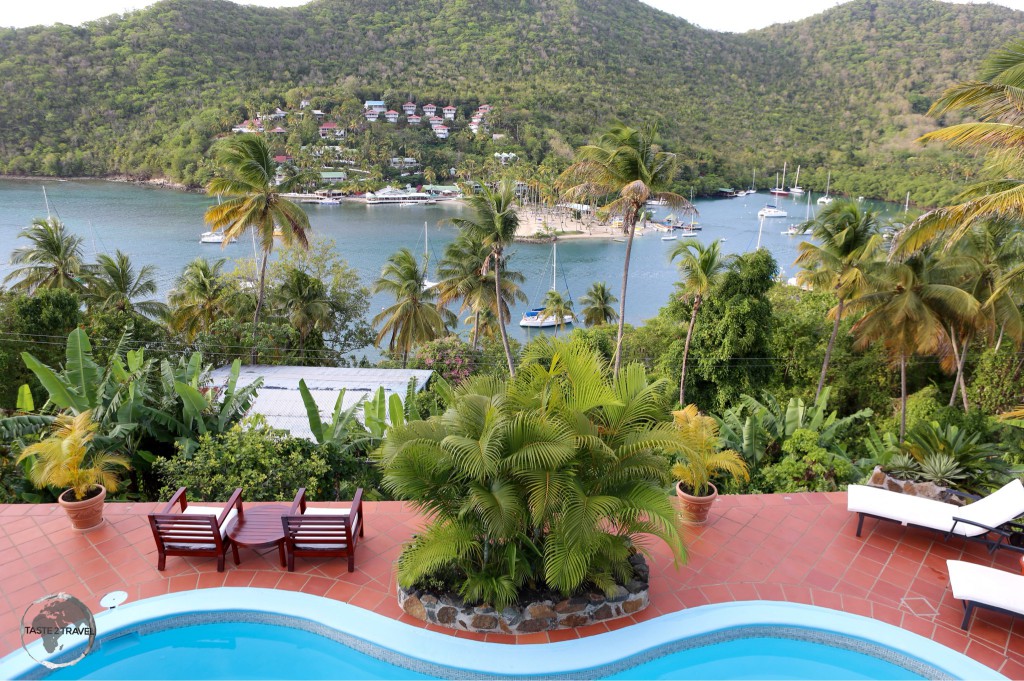Saint Lucia Travel Guide
Welcome to the taste2travel Saint Lucia Travel Guide!
Date Visited: April 2015
Introduction
Saint Lucia is part of the Lesser Antilles, located northeast of St. Vincent and south of Martinique. Due to its close proximity to Martinique the French have had, historically, a huge influence on this former British colony. The French named the island St. Lucia after Lucia of Syracuse.
Location
Located in the Eastern Caribbean, Saint Lucia is the second largest island in the Windward group in the Lesser Antilles. The island is located about 39 km (24 mi) south of Martinique and some 34 km (21 mi) northeast of Saint Vincent.
St. Lucia is a volcanic island and hence more mountainous than most Caribbean islands. The most famous natural landmarks are the Pitons (Gros Piton and Petit Piton), twin volcanic plugs located south of the town of Soufrière. Saint Lucia is also home to a drive-in volcano.
History
The French were the first Europeans to settle the island in 1660 after signing a treaty with the native Carib Indians. The British first took control of the island in 1663 but subsequent wars with France resulted in frequent changes of ownership. The French ruled the island on seven different occasions. The British took definite control in 1814. The island achieved independence from Britain in 1979.
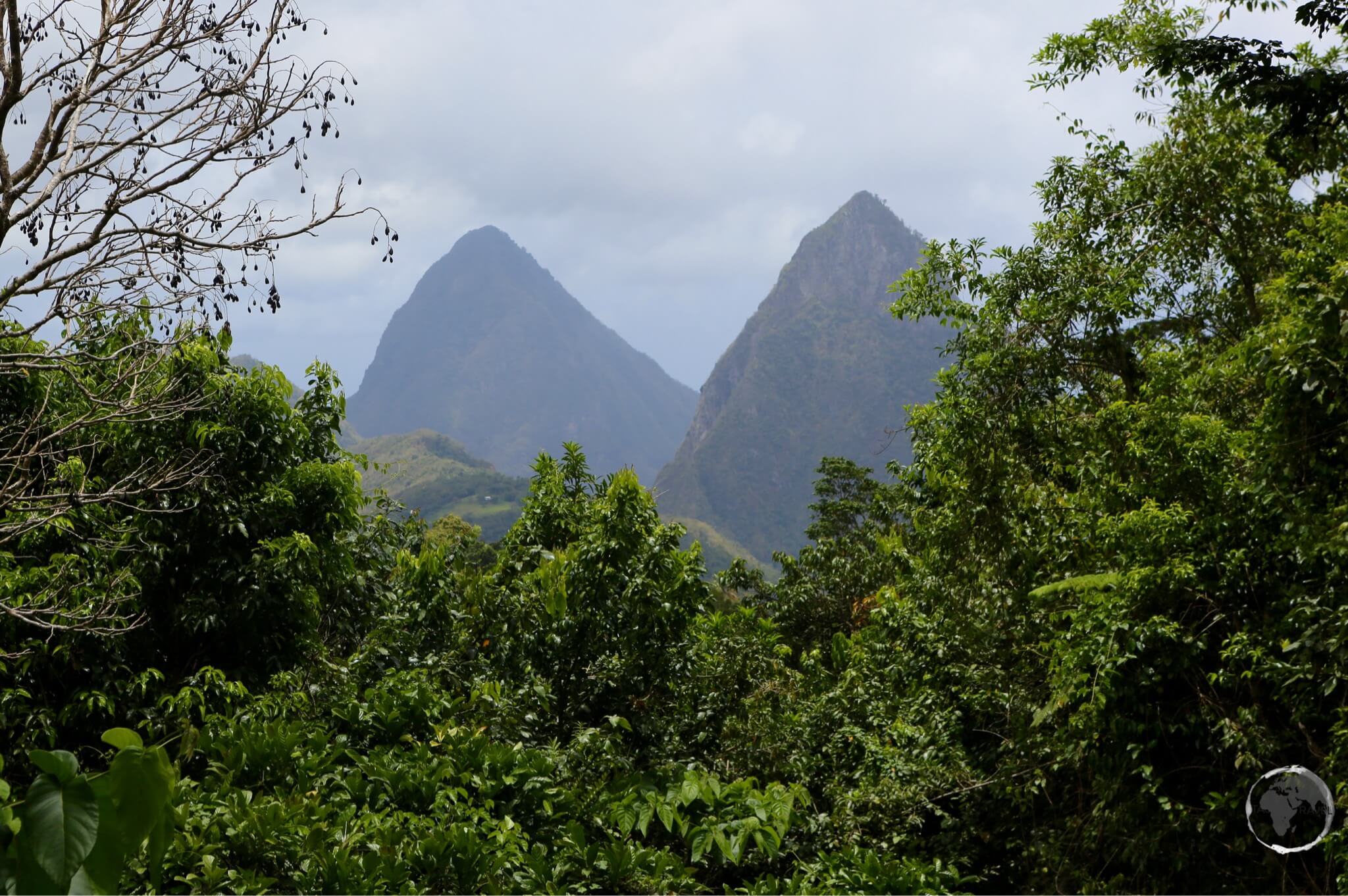
The symbol of St. Lucia, the iconic ‘Pitons’ are twin volcanic plugs.
During the colonial period both the British and the French used the island as a sugar plantation, with slaves being imported from Africa to work the plantations. Today 70% of the islands’ population are Afro-Caribbean – descendants of the former slaves. The island has a population of 174,000.
Currency
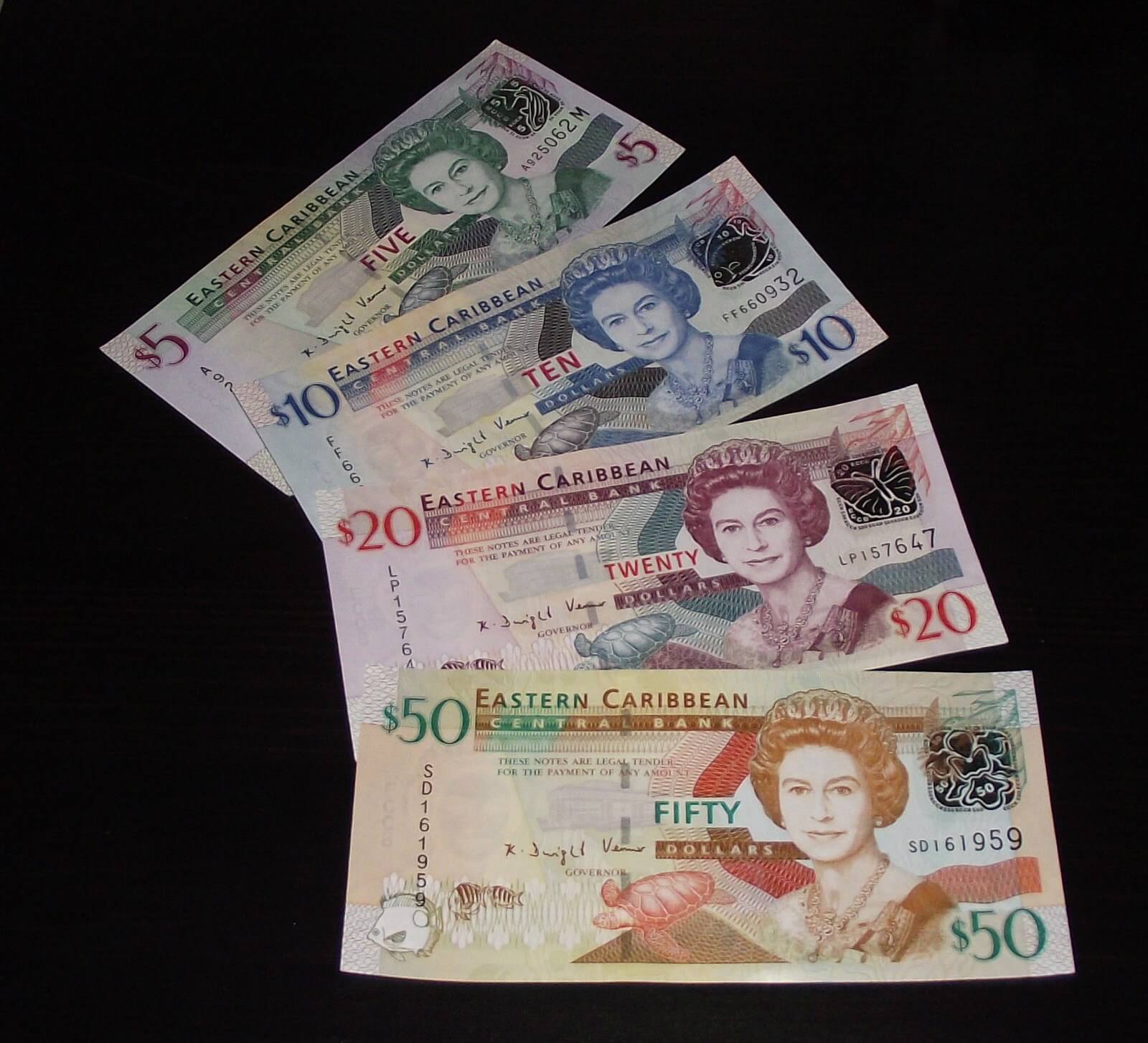
The Eastern Caribbean dollar.
Since 1965, the official currency of St. Lucia has been the Eastern Caribbean dollar (EC$), which trades under the international currency code of XCD. Since 1976, the EC$ has been pegged to the US dollar at the rate of US$1 = EC$2.70.
Flag
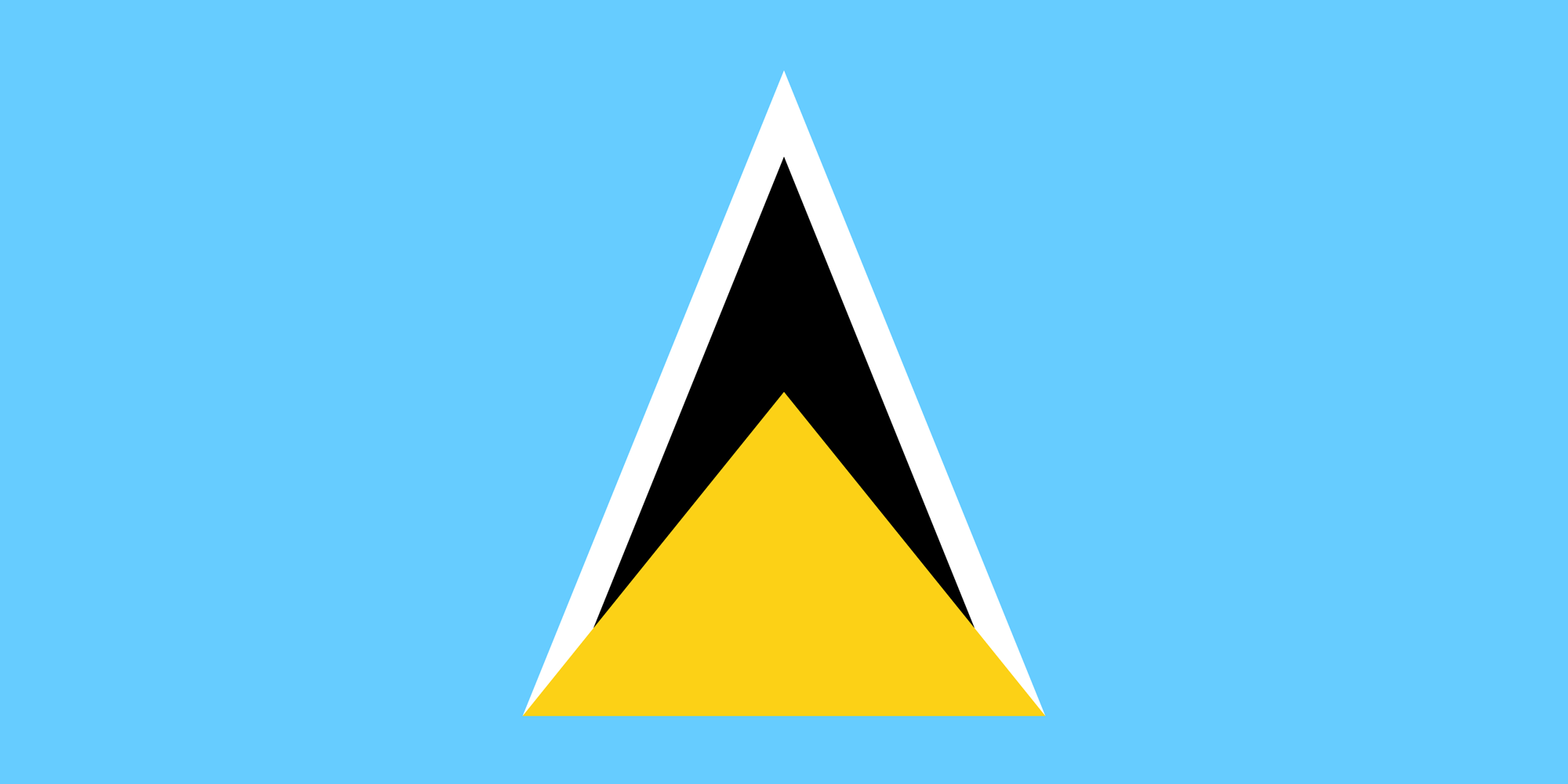
Saint Lucia Flag
The flag of Saint Lucia consists of a cerulean blue field charged with a yellow triangle which fronts a white-edged black isosceles triangle.
The blue represents the sky and the sea, specifically the Atlantic Ocean and Caribbean Sea which surround the country. The black and white allude to the harmonious relationship between the black and white races, while the yellow symbolises ‘sunshine’. The triangles represent the Pitons, the twin volcanic cones which are the symbol of St. Lucia.
Sightseeing
Castries
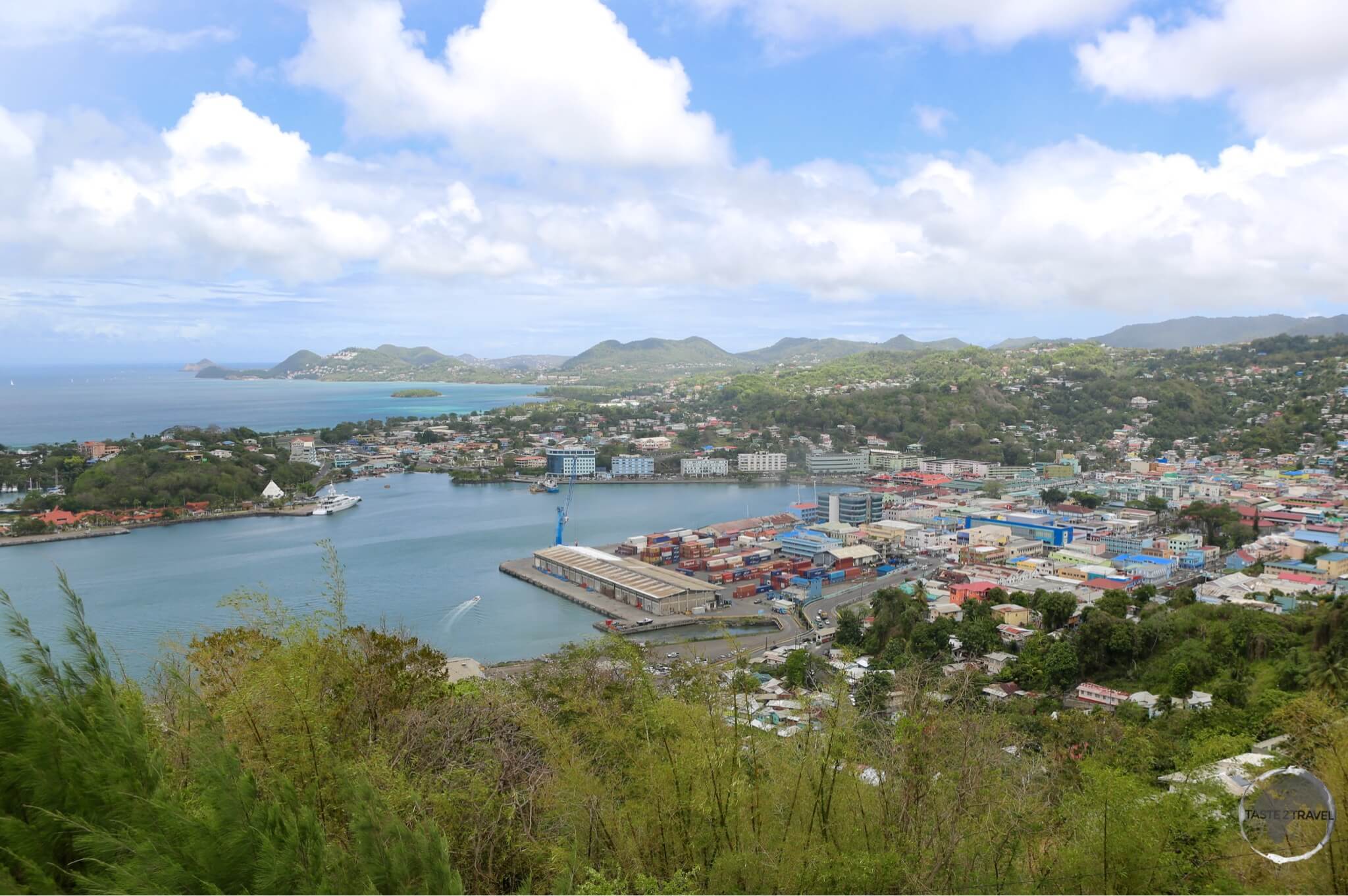
A view of the capital, Castries, from Morne Fortune.
Castries is the capital and largest city (population: 60,000) of Saint Lucia – home to more than 30% of the islands’ population.
The city is built on reclaimed land and features a sheltered harbour from which ferries depart regularly for neighbouring Martinique – for more information on the ferry service see the ‘Getting There‘ section below. Visiting cruise ships dock in Castries harbour.
The downtown market is a great place to shop for souvenirs and for fresh local produce. There are very few sites of interest in Castries, it’s a nice enough place to spend a couple of hours strolling.
A nice place to eat is the Pink Plantation House, located on Morne Fortune south of Castries. The food and ambiance are well worth the drive and along the way you will have panoramic views of Castries.
Around the Island
Gros Islet
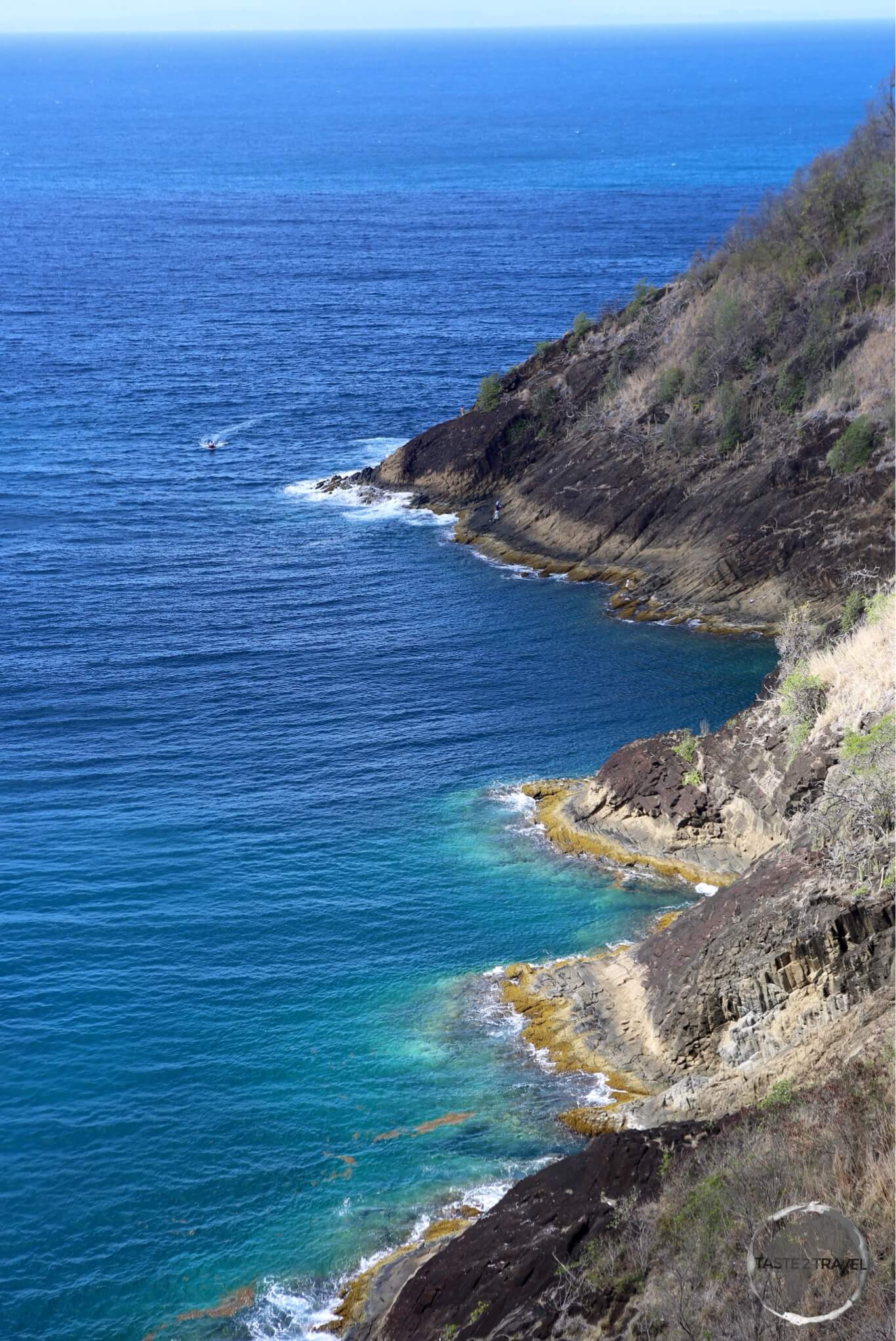
View of the north coast of St. Lucia from Fort Rodney.
This inlet at the northern end of the island is today a big tourist playground but in former times was the setting for many of the battles between the British and French.
The main attraction is Pigeon Island National Park. Here you can visit the ruins of Fort Rodney and the various military buildings, which were used during the battles between the French and the British. From the fort, there are spectacular views of the north-west coast and (on a clear day) neighbouring Martinique.
Located within the park, you will find a nice beach-side restaurant for lunch and a good swimming beach. Snorkeling trips stop by here so bring your snorkel and mask.
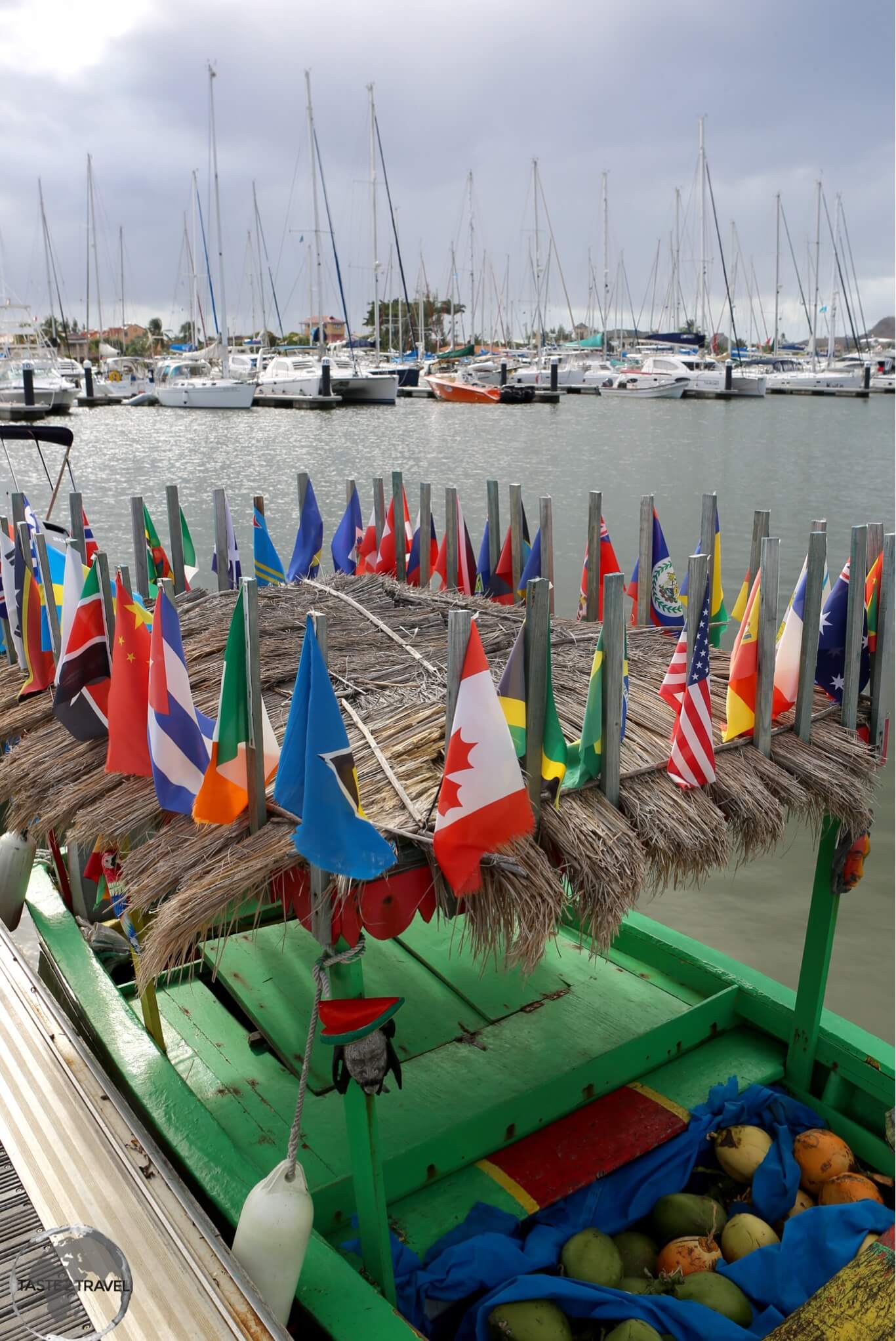
A boat at Rodney Bay marina, flying all the flags of the Caribbean and North America.
On the mainland side of the inlet, Rodney Bay Marina offers many facilities including cafes, bars, restaurants and a supermarket.
Marigot Bay
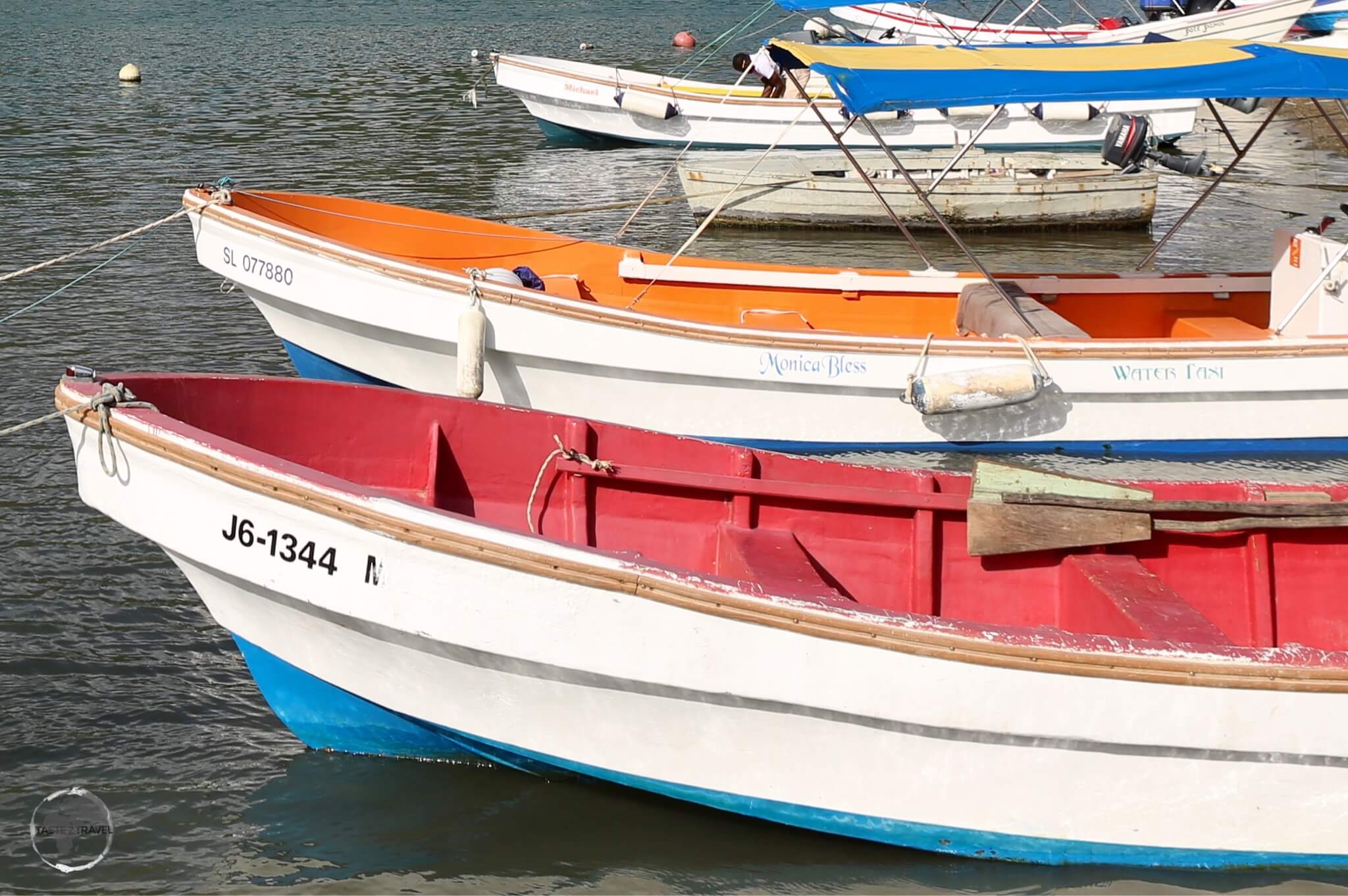
Boats at Marigot Bay.
Marigot Bay is located on the Caribbean (west) coast, a short drive south of Castries. The harbour is surrounded by steep hills, which offer magnificent views. The hills are now home to many guest houses and this is where I stayed while on the island. The inner part of the harbour provides a safe haven during hurricanes.
There is good snorkeling in the bay and an opportunity to see seahorses on the undersea break-wall – but you have to look hard for these perfectly camouflaged, tiny sea creatures. Dive trips can be organised from the marina.
Soufrière
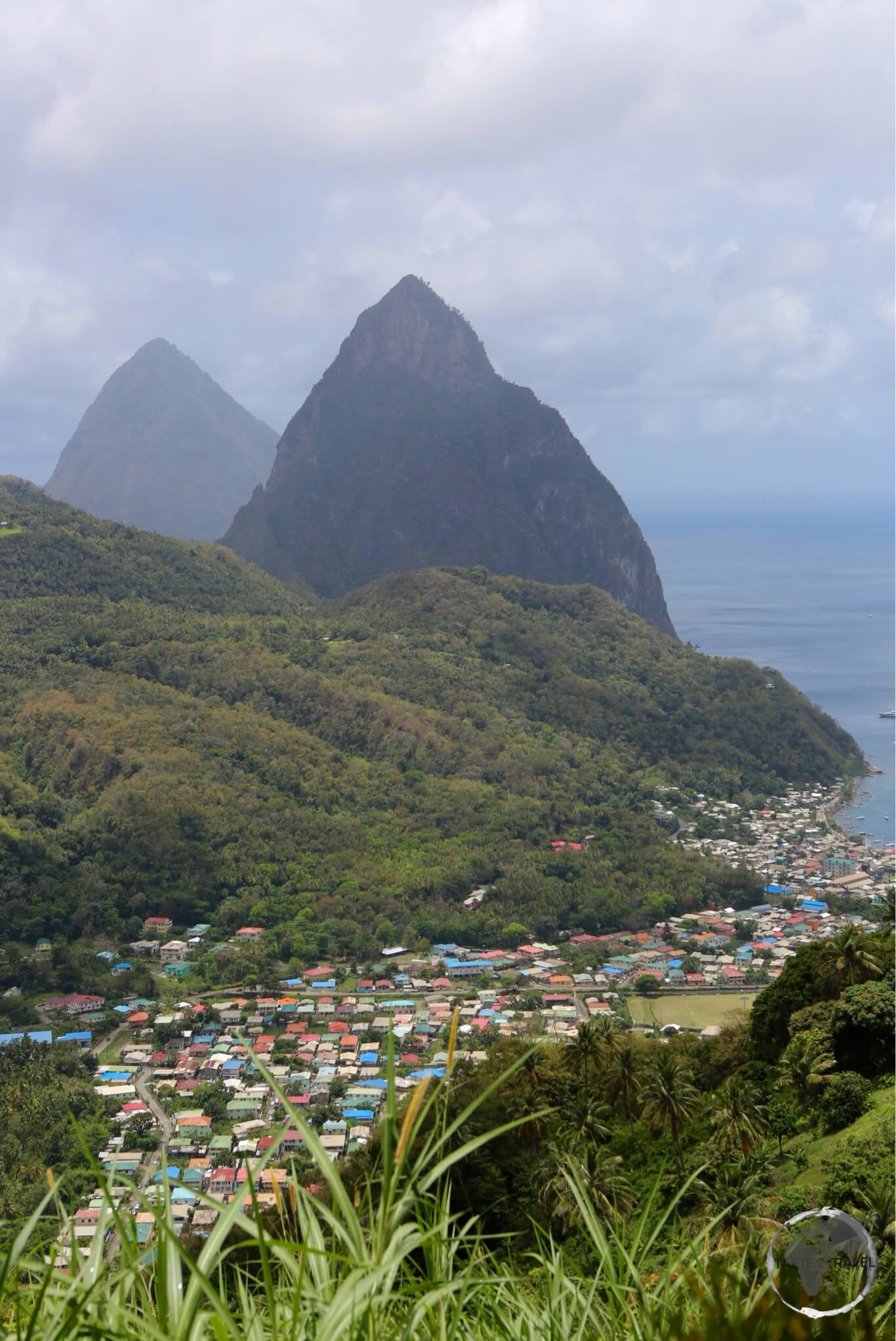
View of Soufrière with the twin Pitons.
This town of 8,000 was the original capital of St. Lucia and was founded by the French who managed plantations in the surrounding area.
South of Soufrière are the Pitons – a UNESCO World Heritage Site. Gros Piton (771m) and Petit Piton (743m) are two volcanic plugs, which plunge into the Caribbean sea. The snorkeling off the beaches around the base of the plugs is incredible.
It’s no secret that St. Lucia is an active volcanic island so it is fitting that the island boasts the worlds only drive-in volcano. Located a short drive south of Soufrière, you literally park your car in the crater.
Walking trails take you past bubbling mud and steaming vents. You should bring your swimmers as you will have the opportunity to take a warm (45 degrees) mud bath, which is apparently medicinal but also lots of messy fun.
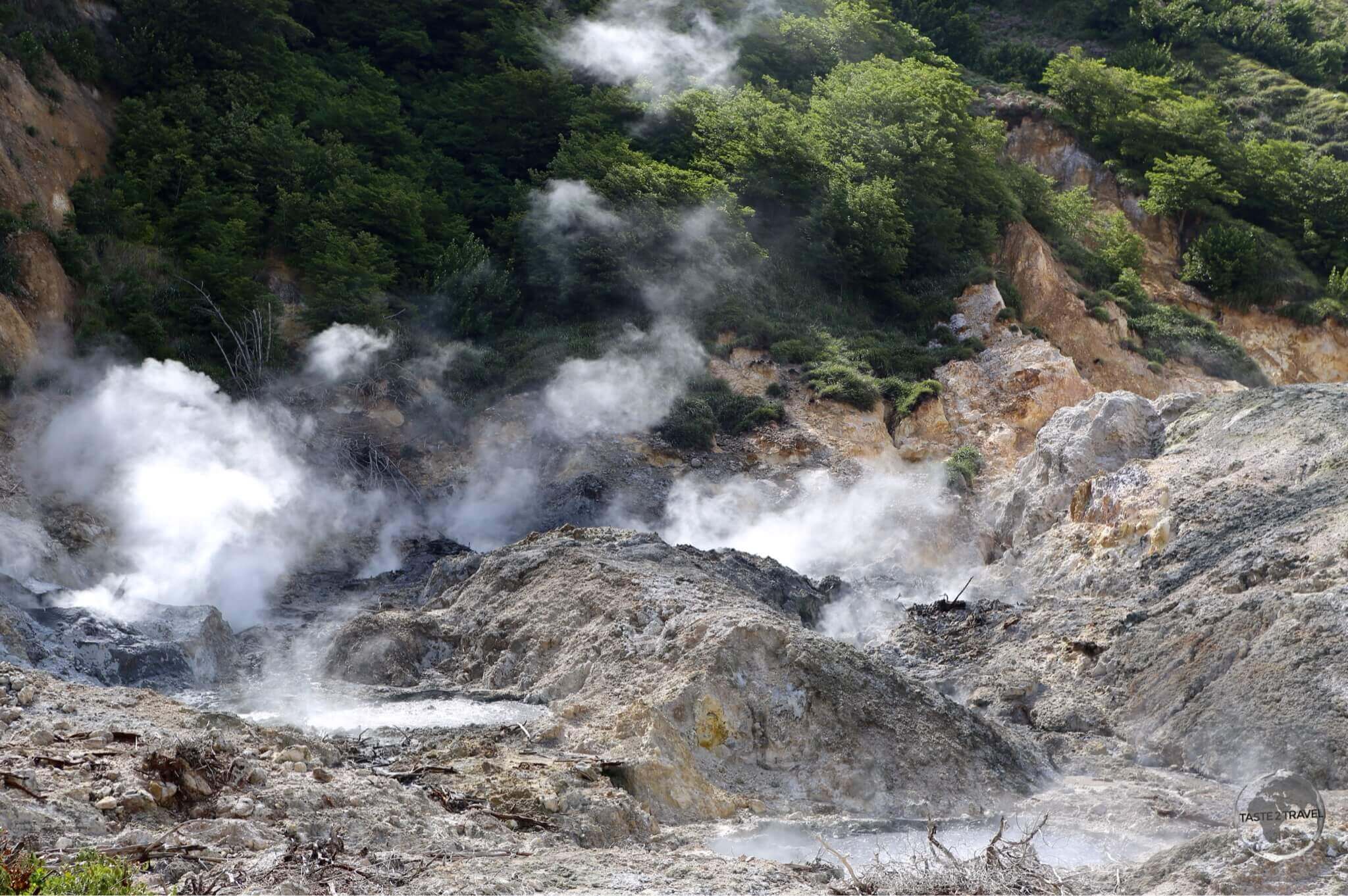
Located near the town of Soufrière, Sulphur Springs is the “world’s only drive in volcano”.
A short drive north along the coast from Soufrière will bring you to the remote and beautiful beach of Anse Chastanet. The beach is occupied by a resort but you are welcome to park your car in their car park and use the beach at no cost. There is good snorkeling at the southern end of the beach and a restaurant and bar for refuelling. The access road is very narrow, windy and steep.
South of Soufrière is Sugar beach. This beach is located between the Pitons and provides excellent snorkeling at the northern end. The beach is now occupied by a resort but you can park your car and use the beach for free.
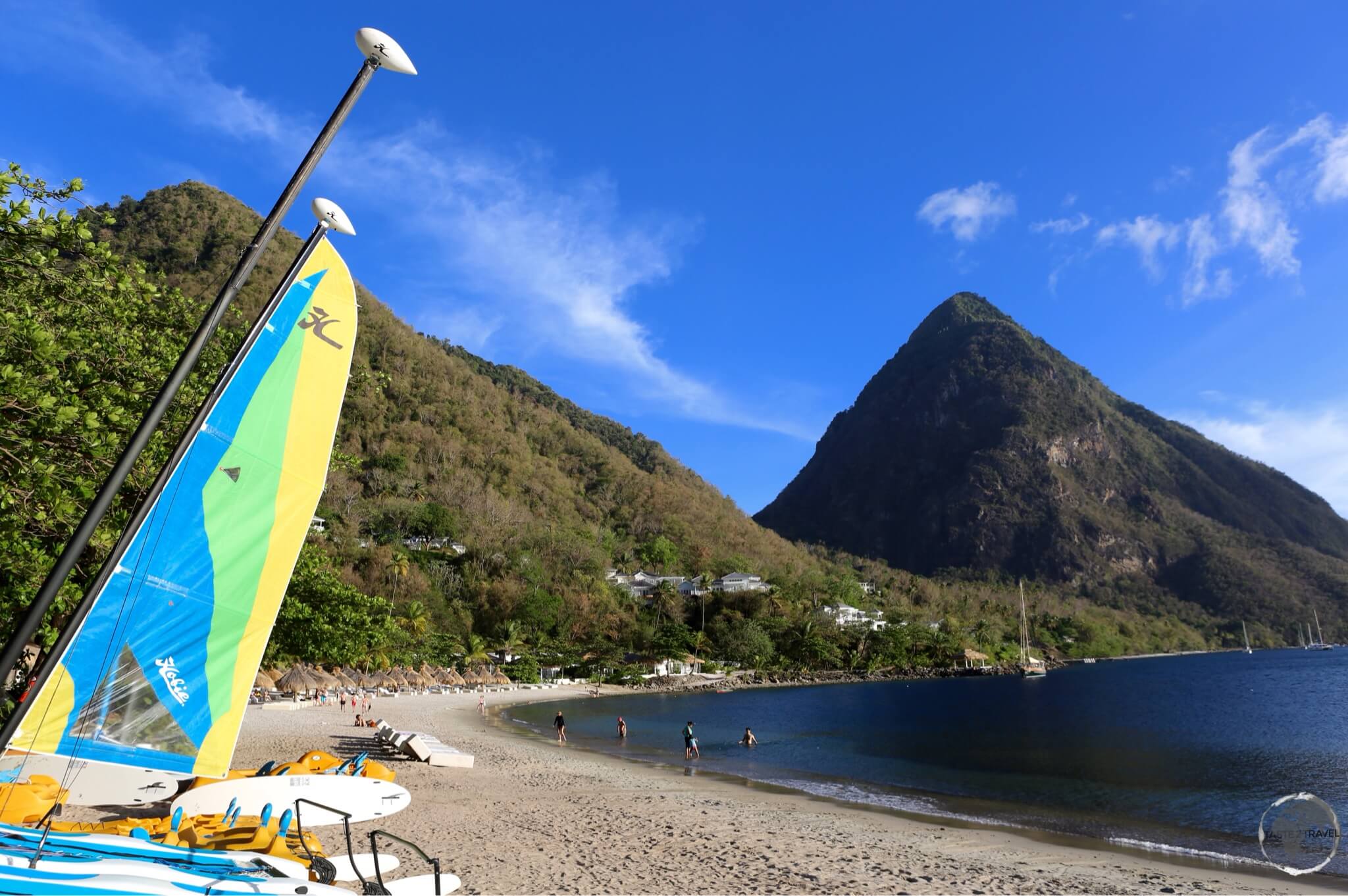
Ideal for swimming and snorkeling, picturesque Sugar Beach is situated between the Pitons.
Just off the highway south of Soufrière is Fond Doux Estate. This is a working cocoa estate with onsite accommodation and a popular restaurant – a good place to stop for lunch.
East Coast
The rugged, wild east coast is less developed than the west coast. The beaches here are exposed to the Atlantic and feature strong currents. You could cover the attractions on the east coast on a day-trip from the west coast.
Accommodation
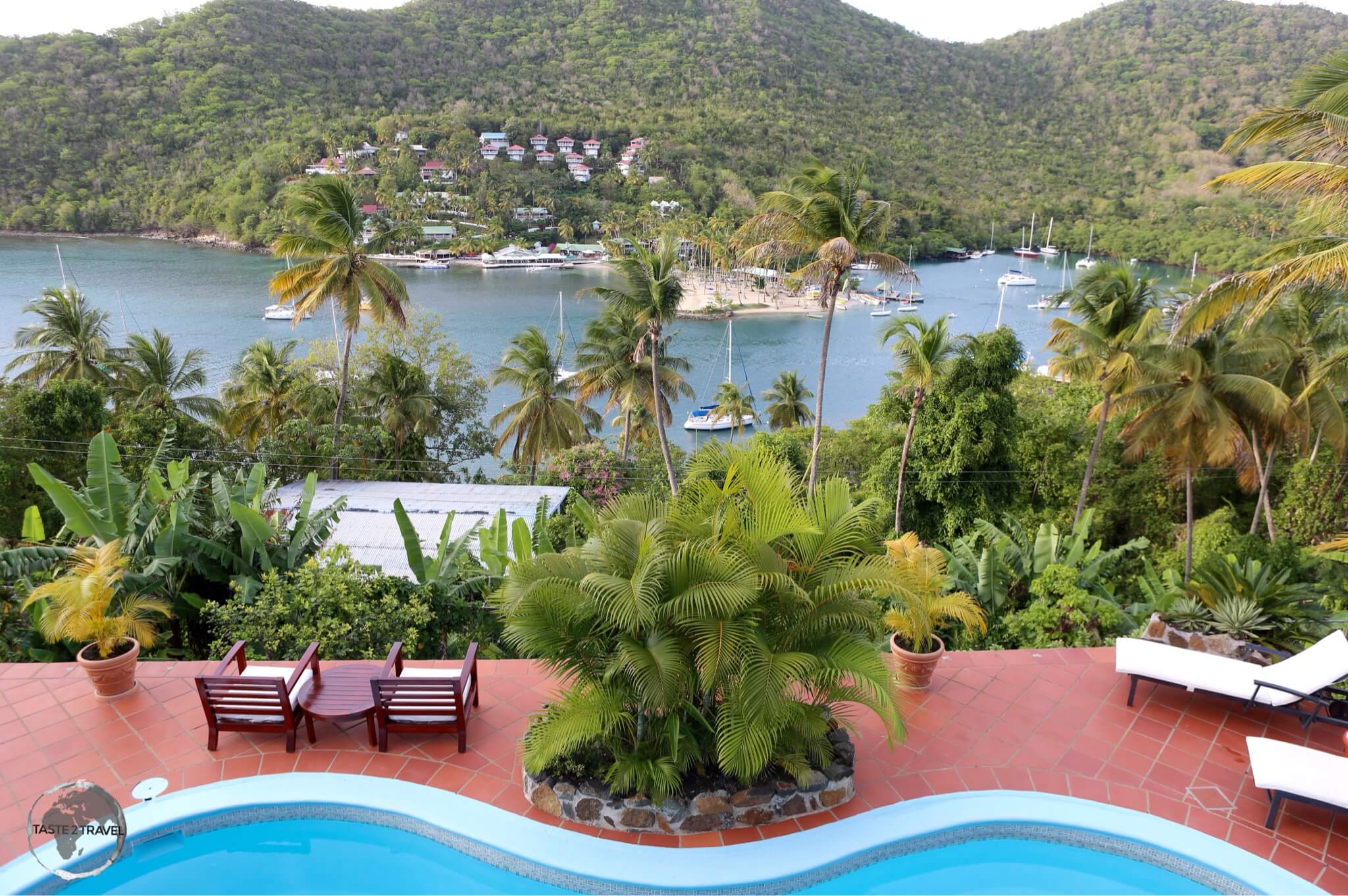
View of Marigot Bay from Marigot Palms guest house.
Accommodation is concentrated on the leeward (Caribbean) side of the island. Many of the best beaches have been sold off to luxury resorts but the beaches are open to the public and are free.
I stayed at the excellent Marigot Palms guest house, which overlooks Marigot Bay. The large rooms are kept spotlessly clean and overlook a beautiful pool and garden all of which offer panoramic views of the bay. The guest house is owned by a friendly, enthusiastic Belgium couple.
Peak season is January to April. Best to book accommodation using an online agent such as booking.com
Eating Out
Like other Anglo-Caribbean islands, the cuisine of St. Lucia has been influenced by its African, Indian and European communities. Curry and Roti are local favourites but have been adapted and modified so they have a distinctly Caribbean twist.
Visa Requirements
Some nationalities require visas for St. Lucia – check your visa requirements prior to arrival.
Getting There
By Air
There are two airports on St. Lucia:
- Hewanorra International Airport (HIA), located at the southern end of the island and George F.L. Charles Airport, located next to Castries. The drive between HIA and Castries takes about an hour and a half.
Hewanorra International Airport – most international flights arrive at HIA. The following airlines provide services from here:
- American Airlines – services to Miami, Charlotte & Philadelphia
- Delta Airlines – services to Atlanta
- Air Canada – services to Toronto & Montreal
- Virgin Atlantic – services to London (Gatwick) and Trinidad
- British Airways – services to London (Gatwick) and Trinidad
- West Jet – services to Toronto
- Jet Blue – services to New York
- Air Transat – services to Toronto
- George F.L. Charles Airport – this small, beach-side airport handles mostly regional flights. The following airlines provide services from here:
- LIAT – services to Barbados, Antigua, Trinidad and St. Vincent
- Caribbean Airlines – services to Trinidad
- Air Antilles Express – services to Guadeloupe and Martinique
- Air Caraibes – services to Guadeloupe and Martinique
By Sea
There is a scheduled ferry service connecting St. Lucia with Martinique (then onto Dominica and Guadeloupe), which is operated by the Guadeloupe based Express-des-Iles. Check their website for schedules and fares.
The only other way to arrive by sea is by private yacht or cruise ship.
Getting Around
Mini buses run on designated routes covering most of the island and taxis are available for hire. Buses have green license plates, while taxis have blue plates.
The best option for exploring the island and getting off the beaten track is to hire a car upon arrival at the airport. Before you hit the road you will need to purchase a St. Lucia drivers license, which will be issued by the rental company.
Safe Travels!
Darren
Follow me on Instagram:
Further Reading
Other travel reports from the Caribbean region include:
Saint Lucia Travel Guide Saint Lucia Travel Guide Saint Lucia Travel Guide Saint Lucia Travel Guide



